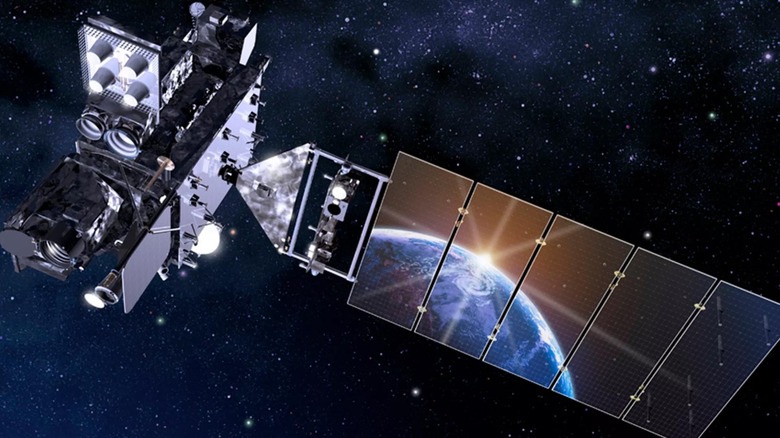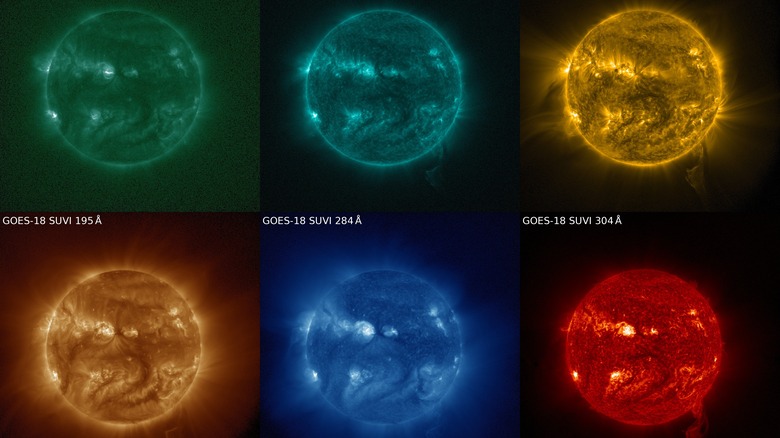See The First Stunning Views Of The Sun From NASA's GOES-18 Satellite
NASA doesn't only launch satellites for looking out into space — it also launches craft to look back at the Earth. Along with the National Oceanic Atmospheric Administration (NOAA), NASA launched a new satellite for Earth observation called GOES-18 on March 1, 2022. Armed with an instrument called the Advanced Baseline Imager (ABI), which is designed to image Earth's weather, its oceans, and its environment (via GOES-R), NOAA shared the satellite's first beautiful image of Earth earlier this year.
But GOES-18 doesn't only look at the Earth. In order to understand the complex facets of Earth's weather, we also need to gather data on the sun. GOES-18 has been observing the sun since June 24, 2022, and NOAA recently released the first images it has captured of our star.
It's worth heading to NOAA's website to see a video of the sun in action. The video shows a dramatic event called a coronal mass ejection, in which a loop of hot plasma goes streaking out from the sun's surface, following the lines of the sun's magnetic field. The outer atmosphere of the sun, called the solar corona, is made up of this hot plasma and the loops which are occasionally thrown out of the sun can be millions of degrees celsius in temperature.
These coronal mass ejections can have an effect on Earth in the form of space weather, in which radiation sent out from the sun zooms through the solar system until it hits our planet, where it interacts with our atmosphere. This space weather can impact satellites and can even be dangerous for astronauts (via NASA).
Staring into the sun
To get the best views of the sun, GOES-18 looks beyond the visible light wavelength and into the extreme ultraviolet and X-ray wavelengths with its cameras. This is important because different elements emit light at these wavelengths when they become very hot, so by looking in these wavelengths, GOES-18 can observe the sun's activity and see which elements are active.
The above photo shows six different images each in a different color to represent the six different channels of the extreme ultraviolet camera.
The large coronal mass ejection shown in the video and the images occurred on July 10, 2022. You can see this most clearly in the 304 Å channel, which is shown in the bottom right image in red. According to NOAA, the sun is becoming more active as part of its 11-year cycle so we should see more coronal mass ejections and events like solar flares in future.
Researchers at NOAA are still doing work on GOES-18, making sure everything is operating as expected through testing and checking its instruments. So these images and video are just a preview of the kind of data that it will be able to collect. NOAA says the satellite should begin its operational role in early 2023 when it will be used to monitor weather and provide early warning about solar activities which could affect power companies, telecommunication providers, and satellites.

